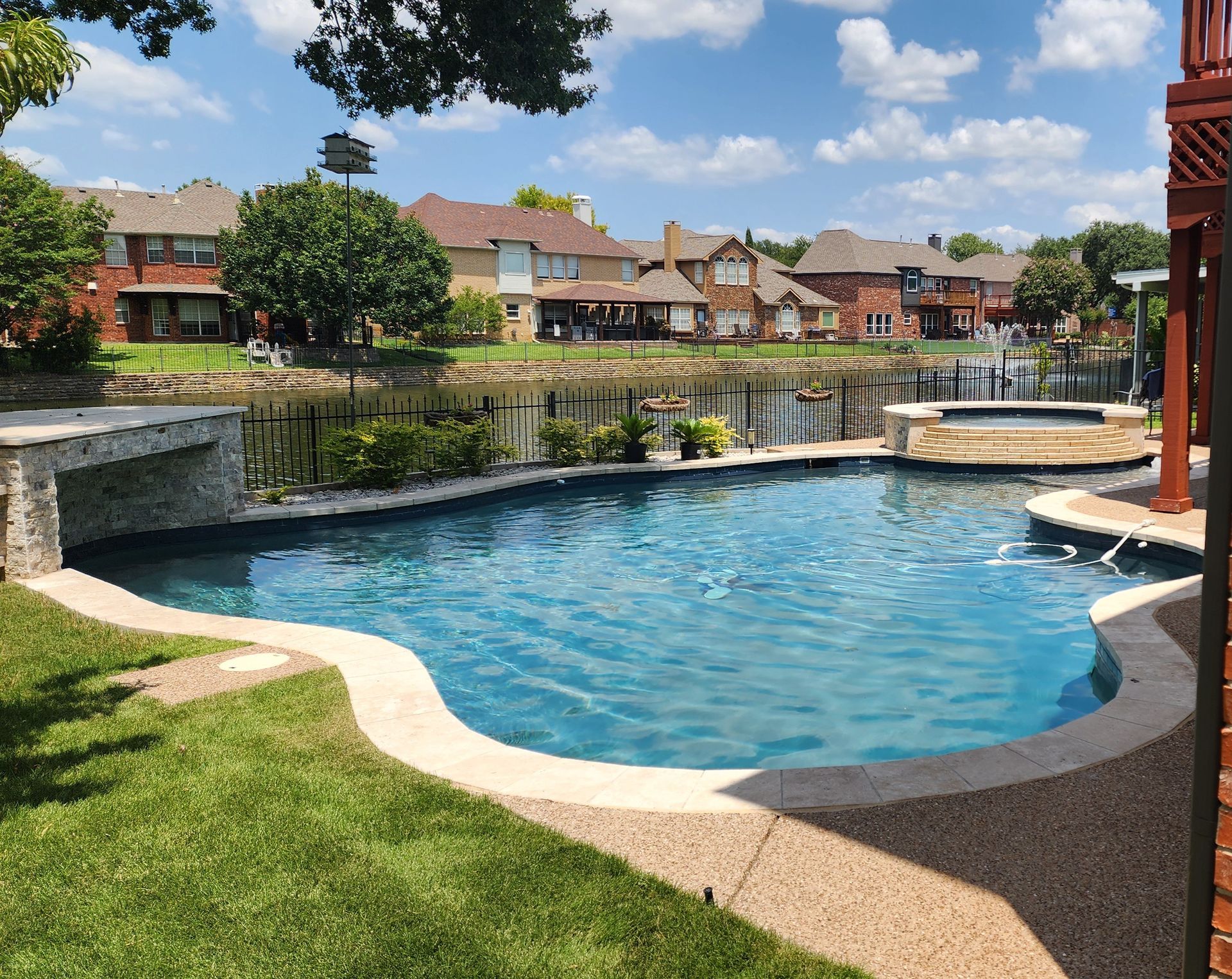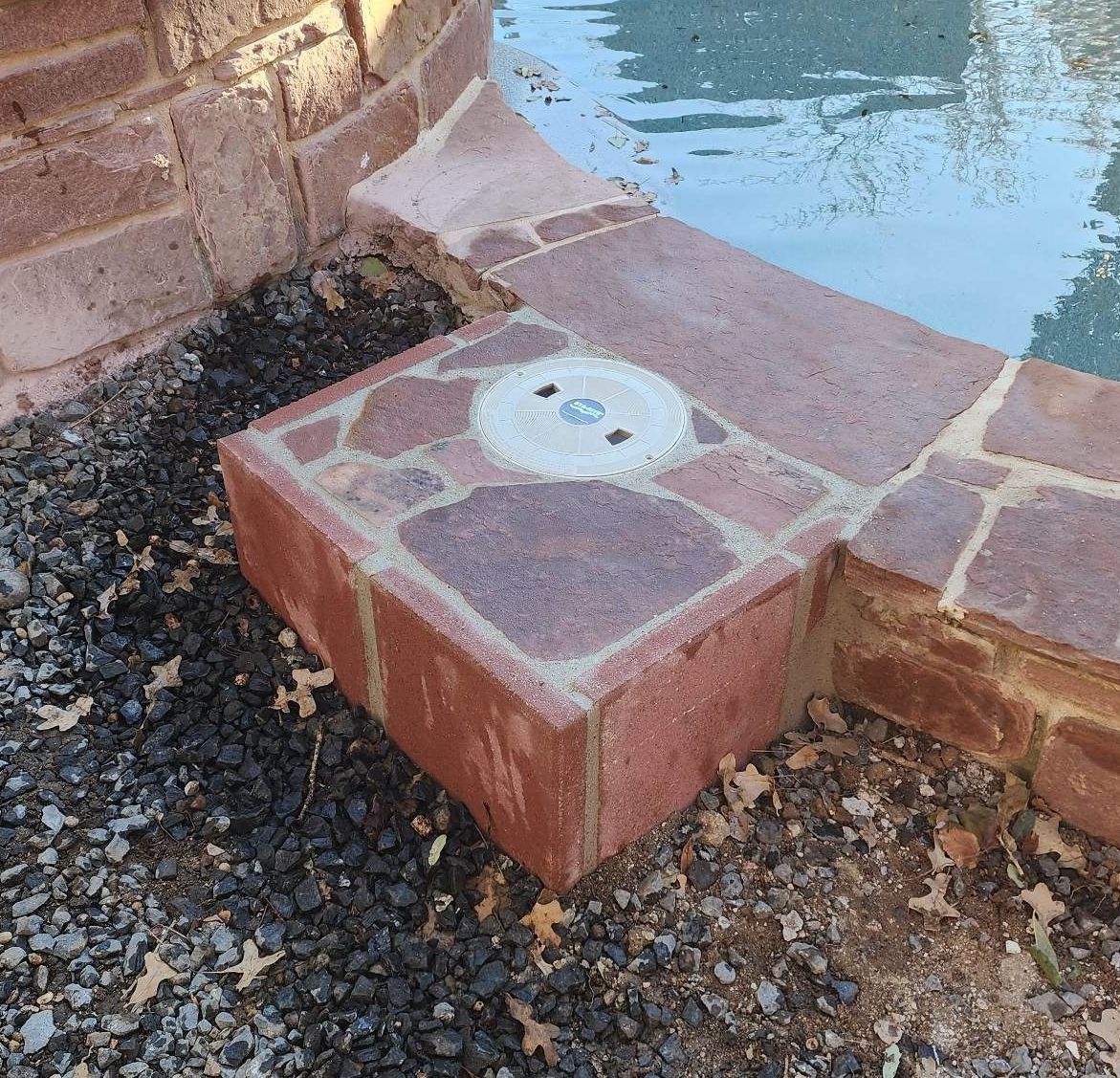How to Tell if a Pool Crack is Structural
Cracking the Code: How to Tell if a Pool Crack is Structural
So you may be asking yourself, how can I tell if my Pool crack is structural? Here we will discuss in depth the dynamics and differences in structure and shape that will show you how to tell if a pool crack is structural. Maintaining the safety and durability of a pool is a crucial aspect of pool ownership. Recognizing and dealing with any cracks that emerge is a vital part of preserving the pool’s structural soundness.
Some cracks might be minor and not pose a serious risk, while others could signal deeper structural issues that need to be addressed promptly.
In this in-depth guide, we will explore how to distinguish between structural and non-structural pool cracks. By recognizing these indicators, you can take appropriate measures to safeguard your pool and avert additional harm. Now, let’s get started!
Table of Contents
To identify if a pool crack is structural, consider the crack’s size, length, position, and any water leaking from the pool.
You must also take into consideration the condition of the pool deck and wall.
Understanding the foundation of concrete pools and other factors are crucial before exploring the causes of pool cracks, whether on the surface or elsewhere.
Concrete Pools
Concrete pools are one of the primary types of pools, alongside fiberglass and vinyl liner pools.
A concrete pool consists of water, sand, cement, and a coarse aggregate (usually stone or gravel). Pool shells can be either concrete or fiberglass, with the pool surface typically covered by plaster or a liner. To create a concrete pool shell, gunite or shotcrete is sprayed. Most in-ground concrete pools have 6 to 8 inches of gunite or shotcrete. Notably, gunite is a dry mix that is combined with water during spraying, while shotcrete pools are already wet.
Gunite pools aren't the only pools that can crack, fiberglass pools are subjected to the same stress as concrete pools and you can find structural cracks in fiberglass pools as well. The repairs for these are quite different compared to Gunite pools.
Types of Cracks in the Pool
Surface Cracks
Surface cracks in pools can arise from several issues:
- Shrinkage cracks may develop if there’s improper curing of plaster or pebble finishes. These types of cracks will appear as hairline cracks in pool plaster. These hairline cracks may not be noticeable at first, until they catch some debris and darken in appearance.
- Similar to how mud cracks when it dries out, leaving a pool empty can lead to surface cracking due to high temperatures.
- Acid washing an aged surface to clean it can also result in cracks.
- During the application of plaster sections can lay over one another causing delamination cracks, that spread and lead to open rough patches of the plaster showing.
- Lastly, simple wear and tear over time can cause the surface to crack.
Structural Cracks
Here are the key factors that can cause structural cracks in swimming pools:
- Earthquakes: Seismic activity can cause stress and movement in the ground, leading to cracks in the pool structure.
- Curing: Structural cracks can occur if the Gunite of the pool isn’t kept adequately moist after application typically 3 weeks.
- Flooding and Major Rainstorms: Excessive water can disrupt the foundational soil, affecting the stability of the pool.
- Soil Expansion and Contraction: Changes in soil moisture levels cause expansion and contraction, potentially resulting in cracks.
- Poor Soil Conditions: If the pool was built on poorly compacted soil or without assessing its load-bearing capacity, it may develop cracks.
- Improper Pool Construction: Inadequate concrete thickness or improperly spaced rebar can weaken the pool structure.
- Differential Settling: When the shallow and deep ends of the pool sit on different types of soil, uneven settling can occur along the pool’s length.
- Subsidence: Ground sinking beneath the pool can lead to structural issues.
Remember, even seemingly minor surface cracks should be inspected promptly to prevent them from worsening.
Water Feature Cracks
Cracks aren't exclusively isolated to the pool itself. If you have any type of water feature or fountains; they too can experience leaks from cracking that can occur in various forms:
- Cracks in Mortar: Over time, the mortar that holds the stones or bricks together in the fountain can deteriorate. This can lead to cracks forming, which can cause water leakage.
- Foundation Sinking: If the foundation of the fountain is not properly supported, it can start to sink. This uneven settling can lead to stress on the structure of the fountain, causing cracks to form.
- Water Damage: Water can seep into these cracks, causing further damage. During freezing weather, the water can freeze and expand, making the cracks larger.
- Structural Damage: These cracks can lead to structural damage in the fountain or feature and lead to water loss over time.
- Impact on Swimming Pool: When a fountain is connected to a swimming pool, the cracks can lead to water loss from the pool. This can also affect the water balance in the pool, leading to potential issues with water quality.
How to Tell if A Crack is Structural
To determine for sure whether a pool crack is merely superficial or indicative of structural damage, one must conduct a thorough examination and evaluation. Here are some key factors that can help determine the severity of the pool crack:
- Dimensions of the Crack: The size and length of the crack can provide valuable insights. Cracks that are confined to the surface of the pool, such as the tile or pool plaster, are typically superficial. These cracks, which do not penetrate the pool shell, might be a result of aging, weather changes, or ground movement (shrinkage cracks).
These are not a major cause for concern as they can be repaired without significant issues. However, if a crack seems to extend deeper, penetrating through various layers of the pool structure, it’s a different matter. Look for cracks that extend across the entire pool shell, walls, or floor. These cracks are usually wider and longer, and they may even cause parts of the pool to separate or displace.
- Water Leaking: Water leaking from the pool is a significant sign of a structural crack. Keep an eye on your water level. If you notice a substantial decrease in the water level, despite regular maintenance and evaporation, water might be escaping through a structural crack. You can test this by marking the water level and monitoring it over a few days. If the crack is merely surface-level, it won’t result in significant water loss.
- Location of the Crack: Superficial cracks might appear as minor fissures on the pool surface, not affecting the pool’s interior. But, are cracks in the pool plaster normal? The answer is both yes and no. While some cracks are shallow, there’s also a possibility that these could be structural cracks. If you observe cracks that appear higher or lower than other parts of the pool, it could indicate severe issues like bulging, water leakage, or shifting tiles, all of which are signs of structural cracks.
- Appearance of the Pool Crack and Pool Walls: The appearance of the pool cracks and pool walls are crucial factors in determining the severity of the crack. Structural cracks might be accompanied by visible signs of movement or shifting in the pool structure. Irregularities such as bulging, sinking, or tilting of the pool walls or deck might be alarming signs. In such cases, it might be beneficial to seek professional help.
Pool Crack Repairs
Here’s a quick summary of the types of pool crack repair methods available on the market:
- Hydraulic Cement: For surface-level cracks, filling with hydraulic cement or resurfacing is recommended.
- Epoxy Injection: Similar to superglue for concrete these products fill and cure within the depth of the crack to ensure it is water-tight to the bottom of the Gunite, it’s effective for mild to moderate cracks.
- Stitching: Trenching, additional rebar, and high-strength concrete make this method effective for larger cracks or reappearing ones.
- Full Thickness Repair: This type of repair is the next level between Stitches and a New Inner Shell, this process involves a crew doing demolition along the area of the crack to the bottom of the Gunite, then tying in and/or welding new steel into the area to reinforce the structure, then refilling the area with either a hydraulic cement or another concrete mixture.
- New Inner Shell: The most effective but expensive method involves adding a second layer of rebar and shotcrete to reinforce the entire pool. Typically used for pools with multiple large cracks.
Cost of Repairing a Structural Pool Crack in 2024
At Manly Maids, we not only provide expert advice on fixing bothersome pool cracks but also offer pool crack & cosmetic repair services. While we may not offer the most in-depth repairs on the market, due to the size of our team. We can however offer you a range of prices for structural pool crack repairs.
- Staples: An economical option, involving rebar staples dowelled and epoxied over the crack. Typically priced at around $195 per foot.
- Epoxy Injection: Similar to superglue for concrete, effective for mild to moderate cracks. Expect costs between $1,650 and $3,250.
- Stitching: Trenching, additional rebar, and high-strength concrete make this method effective for larger cracks. Budget around $260 per foot.
- Full Thickness Repair: This type of repair is the next level between Stitches and a New Inner Shell. Prices Range from $5,000 to $10,000.
- New Inner Shell: The most effective but expensive method, reinforcing the entire pool. Prices range from $15,000 to $24,750.
Why Crack Repairs Might Fail
While it’s not a common occurrence, there are instances where a crack repair might fail. This is not a frequent event but it is certainly within the realm of possibilities.
- Crack Repair Process: When a contractor undertakes the task of repairing a crack, it’s important to understand that they are addressing the visible outcome of an underlying issue, rather than the root cause itself. The crack is merely a symptom of a deeper problem.
- Soil Movement: There are certain forces, such as soil movement, that can potentially cause a previously repaired crack to reopen. This is especially likely if the initial repair was not robust or solid enough to withstand these forces.
- Improper Repair Method: If the method used to repair the crack is not suitable for the severity or nature of the crack, it may cause the crack to reopen or recur. The adequacy of the repair method is crucial in ensuring the longevity of the repair.
- Another Crack in a Different Location: In some cases, a new crack may appear at a different location after the original crack has been repaired. Pools, for instance, tend to develop cracks at their weakest points. If the repair process strengthens the original weak point, the pool may develop a crack in a different area that wasn’t reinforced initially, which then becomes the new weak point.
What Happens if Cracks are Left Untreated
When cracks in structures such as swimming pools or buildings are left untreated, they can lead to a multitude of problems, some of which can have serious long-term implications:
- Leaking Water and Soil Erosion: One of the primary issues that can arise from an untreated crack is leakage. If the crack is leaking, it can lead to the erosion of the very soil that is providing support to the structure, in this case, the pool. The water seeping out from the crack can wash away the soil over time, destabilizing the ground on which the pool rests. This can lead to further complications, including the exacerbation of the existing crack. Over time, this can result in more severe cracking, leading to a vicious cycle of damage and deterioration.
- Structural Damage: Another significant concern is the potential for structural damage. The structural rebar, which is a key component within the shell of the pool, can begin to rust and corrode if water penetrates the crack. This corrosion can weaken the structure of the pool over time, compromising its integrity and safety. The weakening of the structure can lead to further cracking and damage, escalating the severity of the problem.
- Growth of the Crack and Increased Repair Costs: An untreated crack can continue to grow over time. As the crack expands, the cost of repair can increase significantly, especially for in-ground pools. The larger the crack, the more extensive the repair work required, leading to higher costs. Moreover, the crack can even extend to affect the foundation of your house, leading to even more serious structural issues.
Why You Should Hire a Pool Expert
The potential problems highlighted above underscore the importance of entrusting crack repair and maintenance tasks to professionals who specialize in these areas. They can guide you through the advantages and disadvantages of your choices, helping you make cost-effective decisions.
It’s important to note that not all pool cracks necessarily require comprehensive repair. If you’re unsure about the type of the crack, or if it’s more of a foundational issue than a superficial one, it’s recommended to seek advice from a professional pool contractor or a structural engineer. They possess the necessary tools and expertise to carry out an in-depth evaluation.
Keep in mind, these steps serve as a general guide. Structural problems should not be overlooked as they can deteriorate over time and jeopardize the stability of the pool and potentially your home. Reach out to us today to tackle this potentially hazardous situation.




